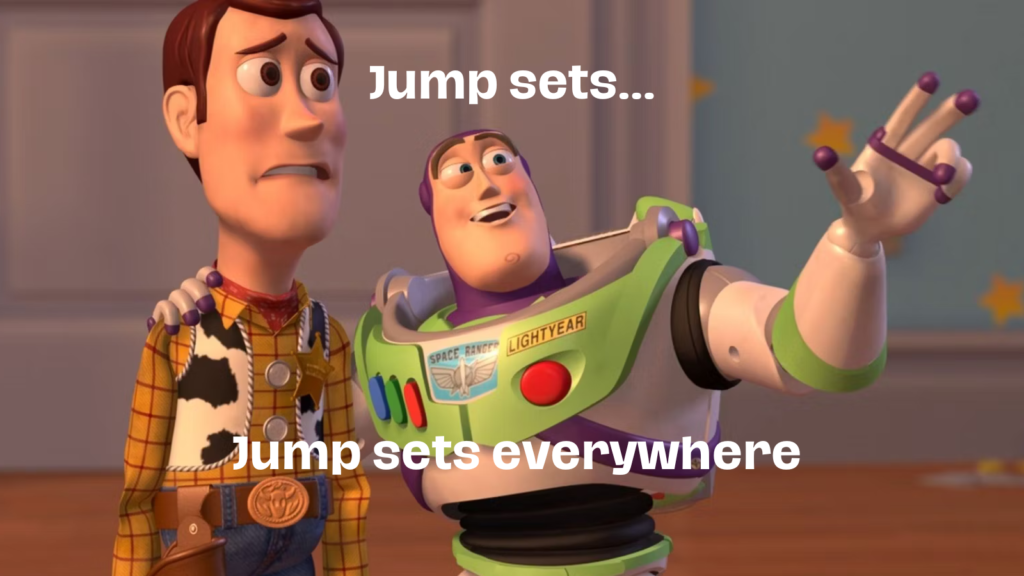These days, it appears everyone is attempting jump setting in beach volleyball. In this post, let’s explore the evolution of jump setting and unravel the reasons behind its recent surge in popularity.
Understanding the Jump Set
Jump Setting in Indoor Volleyball
Jump setting involves setting the attacker while airborne, a technique well-known in indoor volleyball. It accelerates the offense, offering a higher contact point for a lower-trajectory release to the attackers. While not a new concept, it gained prominence indoors, notably with players like Earvin Ngapeth, who elevated it further.
In his team, Ngapeth, when receiving the first ball, creatively employs jump setting. Sometimes faking an attack, he surprises by setting to the outside player at the last second, catching blockers off guard and leaving the attacker unblocked
Jump Setting in Beach Volleyball
Ngapeth’s jump set resembles the plays commonly seen in contemporary beach volleyball. The setter approaches with a full stride, leaps to his maximum height, and then, mid-air, decides whether to attack the ball or set it. When executed effectively, this maneuver transforms the game dynamics. What was once a classic three-touch game now becomes a dynamic one, with the attacker’s intentions kept unpredictable.
Breaking Down the Jump Set: Components and Techniques
Executing a jump set requires alterations to fundamental game elements. The initial touch must facilitate an option play, being high enough for a potential second swing and close to the net. The setter, at times, has to decide between attacking the second ball or setting it, observing the opposing blocker’s movement—whether they jump with the setter or stay with their partner. This decision needs to be made in the final seconds of the play, and the approach should maintain a consistent appearance.
A Look at the History of Jump Sets in Beach Volleyball
Examining games from just a few years ago reveals that jump setting was a rare occurrence. As with many innovations, pioneers had to break through barriers for others to follow. The delayed adoption of this change in beach volleyball can be attributed to two main factors: the historical significance of hand setting skills and the underlying game philosophy.
Tracing the Evolution of Hand Setting in Beach Volleyball History
In the early days of beach volleyball in the US, the sole stringent rule for hand setting was that players must face the setting direction. However, any ball contact was deemed legal, leading to loose ball handling and perceptions of an unfair advantage for attackers. By the early ’70s, a more rigid definition of hand setting emerged, with multiple rotations or most in-motion sets considered faults.
These strict rules dissuaded some American players from attempting hand setting, choosing the safer route of bump setting. Meanwhile, Fédération Internationale de Volleyball (FIVB) rules were less stringent than their American counterparts. Some nations sought alignment with indoor rules, advocating for more lenient regulations, arguing that strict rules eliminated a fundamental skill. The American Association of Volleyball Professionals (AVP) argued for higher standards for top players, leading to subjective calls and delays in skill development on the beach.
The Evolution of Game Philosophy in Beach Volleyball
The controversy surrounding hand setting extends to the innovative concept of running a deceptive offense. Until recently, the prevailing game philosophy adhered to a classic one-two-three play, where the setter’s sole task was delivering a high up-and-down set to their partner. Some players occasionally opted for a second ball hit but lacked any deception. The prevalent belief held that everyone on the beach knew there was only one player to set, rendering deception irrelevant.
However, a shift in this notion has emerged in recent years as the sport evolves. Specialized and physically gifted players, focusing exclusively on beach volleyball from a young age, have propelled the game to new heights. The traditional barrier of clean hand setting is nearly eliminated, with more teams adopting it as their primary setting technique. Pioneering this shift, the Swedish male team of David Åhman and Jonatan Hellvig embraced jump setting as their go-to gameplay.
The Swedish Jump Set
The dynamic duo, young and talented, elevate their offensive strategy by consistently presenting a dual threat to opponents. Mastering their serve receive, they create the opportunity for the second ball nearly every time. Concealing their decision until the final moment, their offense frequently concludes with an open net swing, capitalizing on their physical prowess and speed to secure effortless points.
As some teams tentatively integrate jump setting in specific situations, the Swedish pair, Åhman and Hellvig, uniquely adopt it as their primary strategy in nearly every point. This approach necessitates a radical shift in serve reception and mastering the challenging skill of deciding to hit or set while mid-air. The steep learning curve poses initial challenges, deterring some teams from embracing this shift.
Åhman and Hellvig, in a Red Bull interview, revealed their journey from playing one or two jump sets per game to making it their signature move through years of dedicated practice since joining forces in 2018. Their impressive achievements including youth titles, European championships, and high world rankings, attest to the strategy’s effectiveness.
Final Thoughts
In the coming years, jump setting is poised to emerge as a pivotal aspect of the game’s evolution in beach volleyball. Teams are expected to explore new dimensions of creativity, incorporating innovative techniques and strategies. This dynamic shift promises to elevate the level of beach volleyball, as players and teams embrace the challenge of pushing boundaries and redefining the sport with their inventive approaches.


